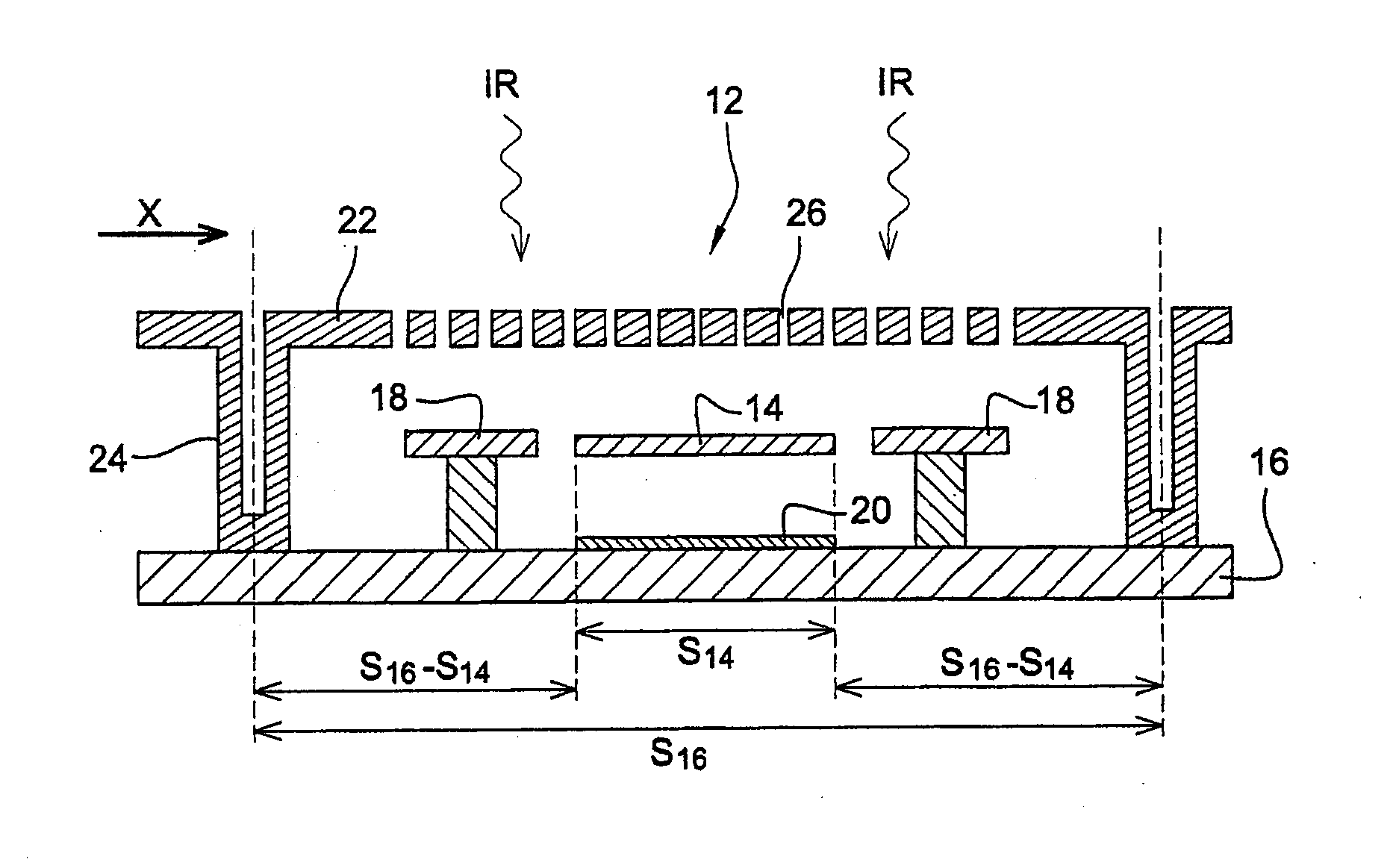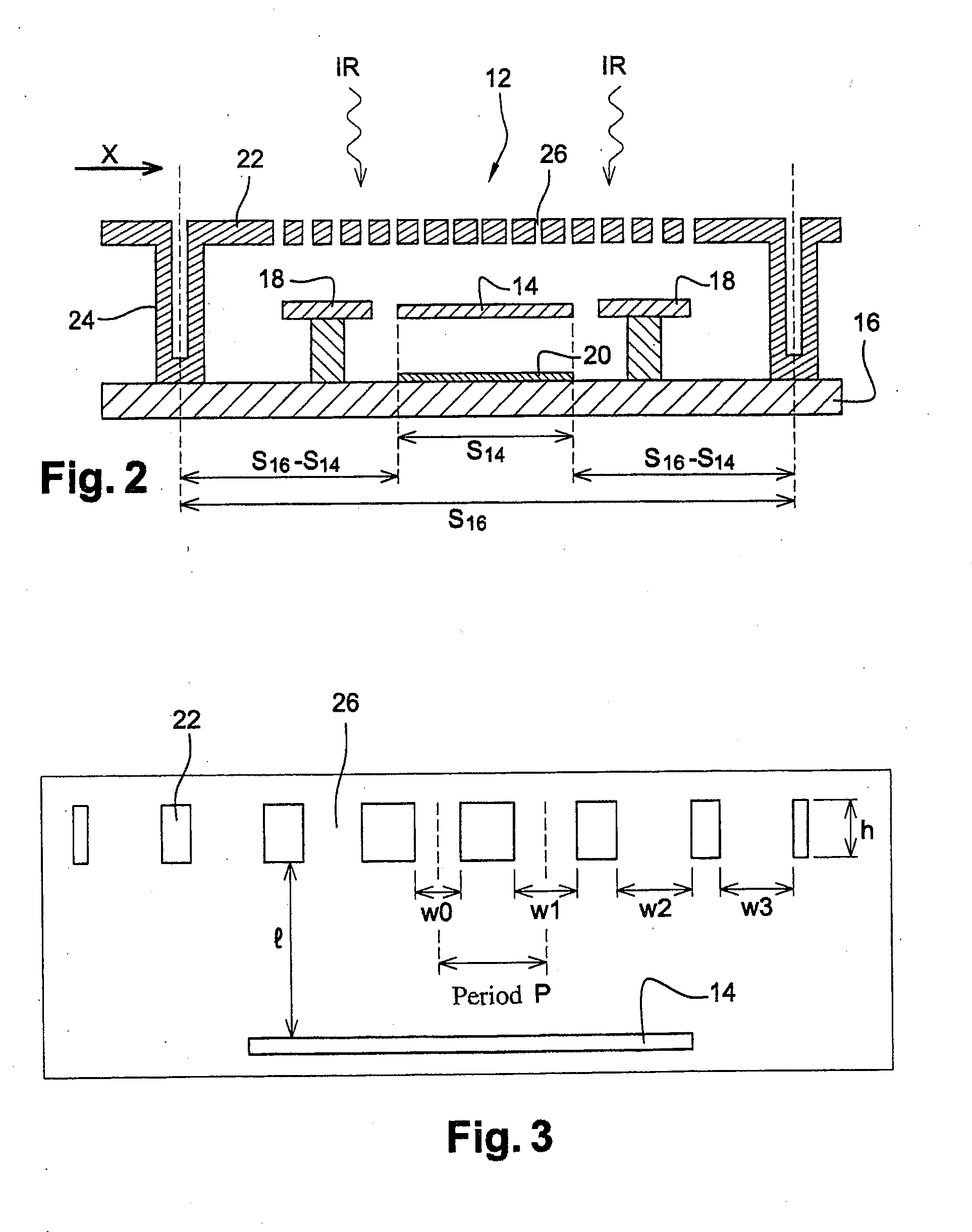Infrared detector based on suspended bolometric micro-plates
a technology of bolometric micro-plates and infrared detection, which is applied in the field of terahertz bolometric detection, can solve the problems of poor fill factor, higher cost, and inability to achieve satisfactory fill factor
- Summary
- Abstract
- Description
- Claims
- Application Information
AI Technical Summary
Benefits of technology
Problems solved by technology
Method used
Image
Examples
first embodiment
[0053]FIGS. 1 and 2 show, by way of example, a bolometric detector array 10 comprising three pixels by three pixels in accordance with the invention.
[0054]Each pixel 12 comprises a bolometric micro-plate 14, suspended above a substrate 16 by support and thermal isolation arms 18, which makes it possible to detect incident electromagnetic radiation IR in an infrared wavelength range from 0.75 μm to 1,000 μm and / or in a terahertz wavelength range from 1 mm to 3 mm.
[0055]As is known in itself, micro-plate 14 warms up due to the effect of the incident radiation IR and its electrical resistance varies as a function of the increase in its temperature. The same material can be used to implement both these functions, TiN for instance is suitable for detecting wavelengths in the mid infrared range.
[0056]The support and thermal isolation arms 18 consist mostly of a material with a low thermal conductance which contains an electrical conductor element that makes it possible to subject micro-pl...
second embodiment
[0097]the support structure and its manufacturing process are described below in relation to the schematic, cross-sectional views in FIGS. 13 to 15.
[0098]This method starts with the same steps as those described in relation to FIGS. 7 to 9 and then continues by depositing a solid sheet of a semiconductor or dielectric material so that sacrificial layer 44 and cuts 46 are covered by a layer 50 of said material (FIG. 13). However, unlike the previous embodiment, the thickness of the second sacrificial layer 42 deposited on micro-plate 14 takes into account the thickness of layer 50, with the sum of the thicknesses of layer 42 and layer 50 equaling the desired distance l between focusing membrane 22 and micro-plate 14.
[0099]The material of layer 50 is advantageously chosen so that it is compatible with the material of substrate 16, especially in terms of adhesion and deposition conformity.
[0100]The material of layer 50 is also chosen so that it is relatively non-absorbent in the wavele...
PUM
 Login to View More
Login to View More Abstract
Description
Claims
Application Information
 Login to View More
Login to View More - R&D
- Intellectual Property
- Life Sciences
- Materials
- Tech Scout
- Unparalleled Data Quality
- Higher Quality Content
- 60% Fewer Hallucinations
Browse by: Latest US Patents, China's latest patents, Technical Efficacy Thesaurus, Application Domain, Technology Topic, Popular Technical Reports.
© 2025 PatSnap. All rights reserved.Legal|Privacy policy|Modern Slavery Act Transparency Statement|Sitemap|About US| Contact US: help@patsnap.com



